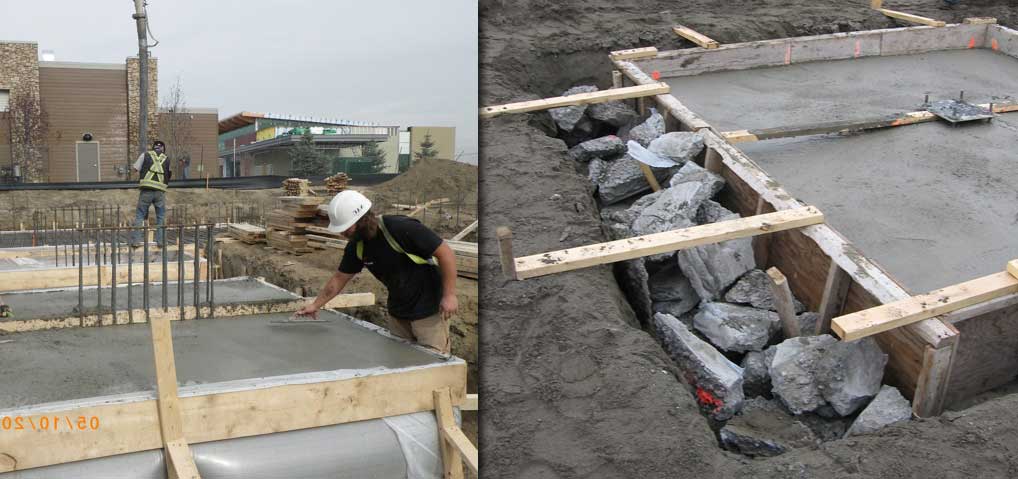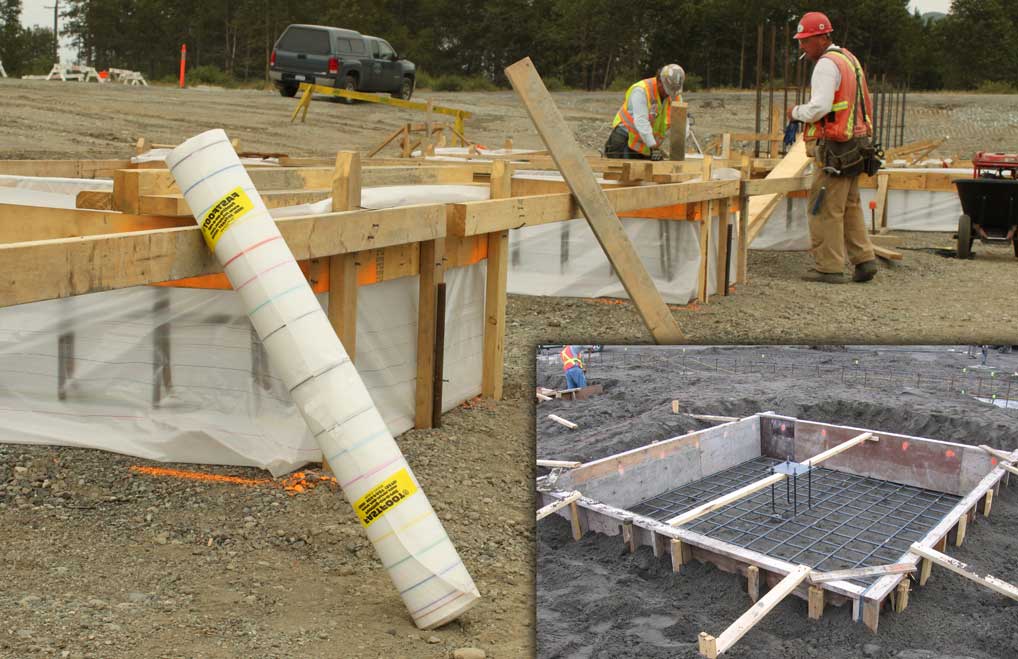
FASTFOOT® COMMERCIAL

COMMERCIAL PADS: FASTFOOT® versus PLYWOOD
Fastfoot® and a single 2x8 screed board hinged at each corner for rapid deployment and stripping, weighs just 4.6 pounds a running foot.
Plywood with the 2x4 frame weighs over 14 pounds a running foot, over three times that of Fastfoot®. Using Fastfoot® reduces wear and tear on your crew, and keeps your project ahead of schedule.

COST COMPARISON: FASTFOOT vs PLYWOOD
Fastfoot® is dramatically less expensive than using plywood to form commercial pads. Click HERE or on the image above.
Minimal Bracing
In the photo below the contractor uses minimal bracing: two single stakes on each face, with no lateral support on bottom. Lateral pressures are reduced 50% with Fastfoot®, with no lateral pressure at the bottom. This makes installation and stripping fast and lowers costs significantly.
With plywood, concrete pressure is highest at the bottom, requiring significant support at base to prevent blowouts.
Note in the photo above how the contractor has shoveled sand around the base to prevent blowouts. This is never required with Fastfoot®.

Screed Board Adjustment
With Fastfoot® the 2x8 is adjusted to the exact elevation of the top of the pad, with fabric filling between the screed board and ground. Screeding is fast, easy and efficient.
With plywood, the top of the form is seldom the top of the pad, requiring the installation of a 1x2 leveling strip around the inside. Concrete placement and finishing is difficult and time consuming.
Note the form blowout, requiring rapid deployment of broken concrete from a previous plywood form failure.

Pour Size
As Fastfoot® is 'sacrificed', there are no inventory limitations on the size of the pour. The left photo (with bracing removed) shows the first pour; the right photo is the second pour. The number of pads poured each day was a function of the speed of the concrete pump and the supply of concrete, not form inventory.
With plywood, the size of the pour is constrained by the plywood in stock. If this project was formed with plywood, 18,000 pounds of form materials would have been required for each of the two pours, and a crane to move the panels across the site.

Rising Damp Prevention & Ground Water Contamination
Concrete is hydroscopic, wicking up ground water which then enters the interior of the structure. This is why underground garages have very high humidity levels. Note the damp color of the sand, indicating moisture wicking up from the water table below.
Fastfoot® is a damp proof membrane which prevents ground moisture wicking up into the concrete, thereby providing a dry and healthy indoor air environment. The membrane also prevents cement fines leaching into the ground water table.
Plywood is an open form providing NO protection against ground moisture, leading to damp concrete for the life of the building. Cement fines contaminate the water table.
Click here for additional information on rising damp

Cost of Materials, Cost of Recycling
Fastfoot® is an inexpensive form that uses minimal resources. The small amount of lumber is protected by fabric and therefore lasts indefinitely. No recycling costs with Fastfoot®.
Plywood forms are heavy and expensive. They have a short life as a temporary form, then must be stripped, cleaned, treated, transported, stored, and ultimately discarded in a land fill. This requires significant labor and energy.



